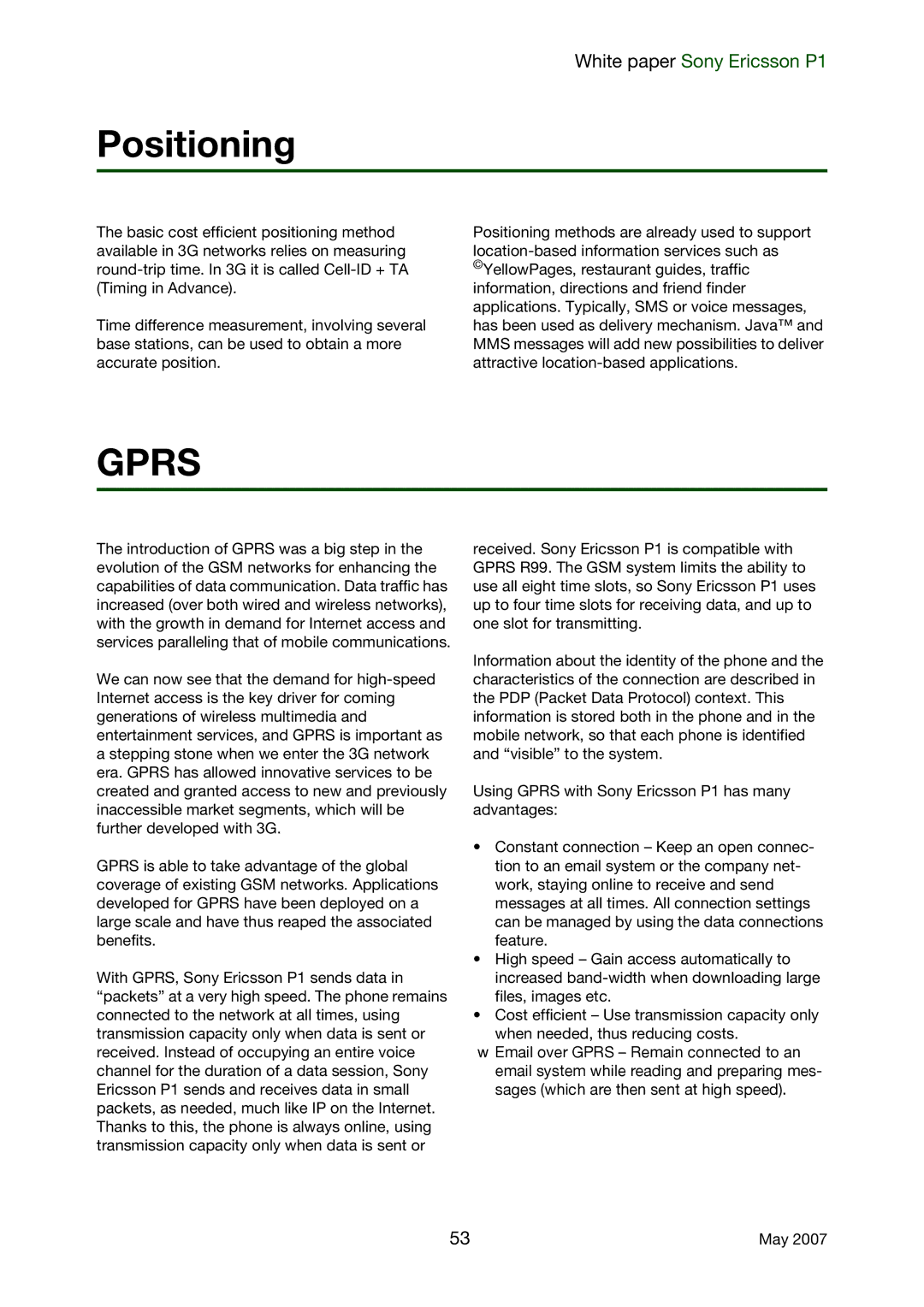
White paper Sony Ericsson P1
Positioning
The basic cost efficient positioning method available in 3G networks relies on measuring
Time difference measurement, involving several base stations, can be used to obtain a more accurate position.
Positioning methods are already used to support
GPRS
The introduction of GPRS was a big step in the evolution of the GSM networks for enhancing the capabilities of data communication. Data traffic has increased (over both wired and wireless networks), with the growth in demand for Internet access and services paralleling that of mobile communications.
We can now see that the demand for
GPRS is able to take advantage of the global coverage of existing GSM networks. Applications developed for GPRS have been deployed on a large scale and have thus reaped the associated benefits.
With GPRS, Sony Ericsson P1 sends data in “packets” at a very high speed. The phone remains connected to the network at all times, using transmission capacity only when data is sent or received. Instead of occupying an entire voice channel for the duration of a data session, Sony Ericsson P1 sends and receives data in small packets, as needed, much like IP on the Internet. Thanks to this, the phone is always online, using transmission capacity only when data is sent or
received. Sony Ericsson P1 is compatible with GPRS R99. The GSM system limits the ability to use all eight time slots, so Sony Ericsson P1 uses up to four time slots for receiving data, and up to one slot for transmitting.
Information about the identity of the phone and the characteristics of the connection are described in the PDP (Packet Data Protocol) context. This information is stored both in the phone and in the mobile network, so that each phone is identified and “visible” to the system.
Using GPRS with Sony Ericsson P1 has many advantages:
•Constant connection – Keep an open connec- tion to an email system or the company net- work, staying online to receive and send messages at all times. All connection settings can be managed by using the data connections feature.
•High speed – Gain access automatically to increased
•Cost efficient – Use transmission capacity only when needed, thus reducing costs.
√bã~áä=çîÉê=dmop=Ó=oÉã~áå=ÅçååÉÅíÉÇ=íç=~å=
Éã~áä=ëóëíÉã=ïÜáäÉ=êÉ~ÇáåÖ=~åÇ=éêÉé~êáåÖ=ãÉëJ
ë~ÖÉë=EïÜáÅÜ=~êÉ=íÜÉå=ëÉåí=~í=ÜáÖÜ=ëéÉÉÇFK
53 | May 2007 |
